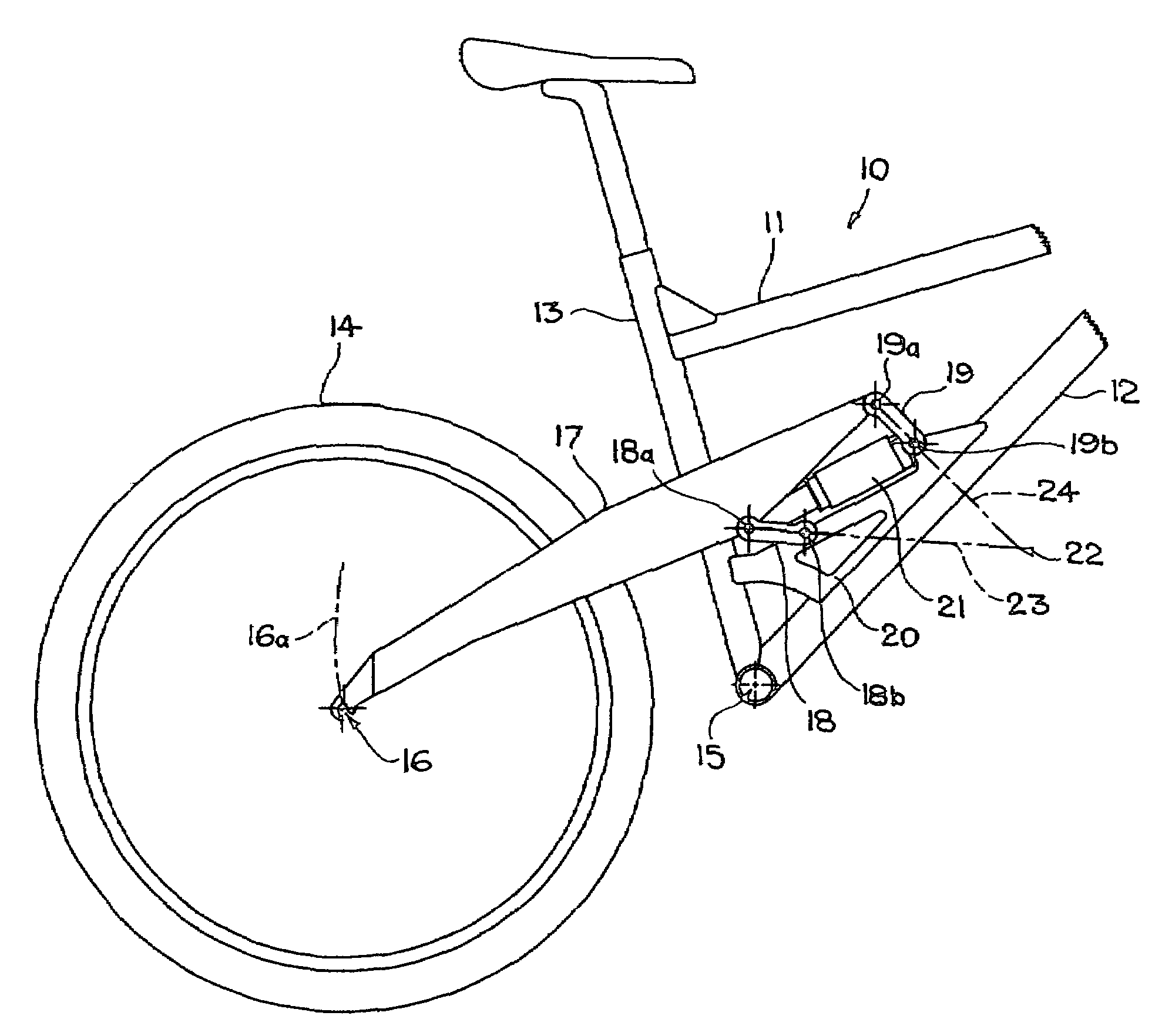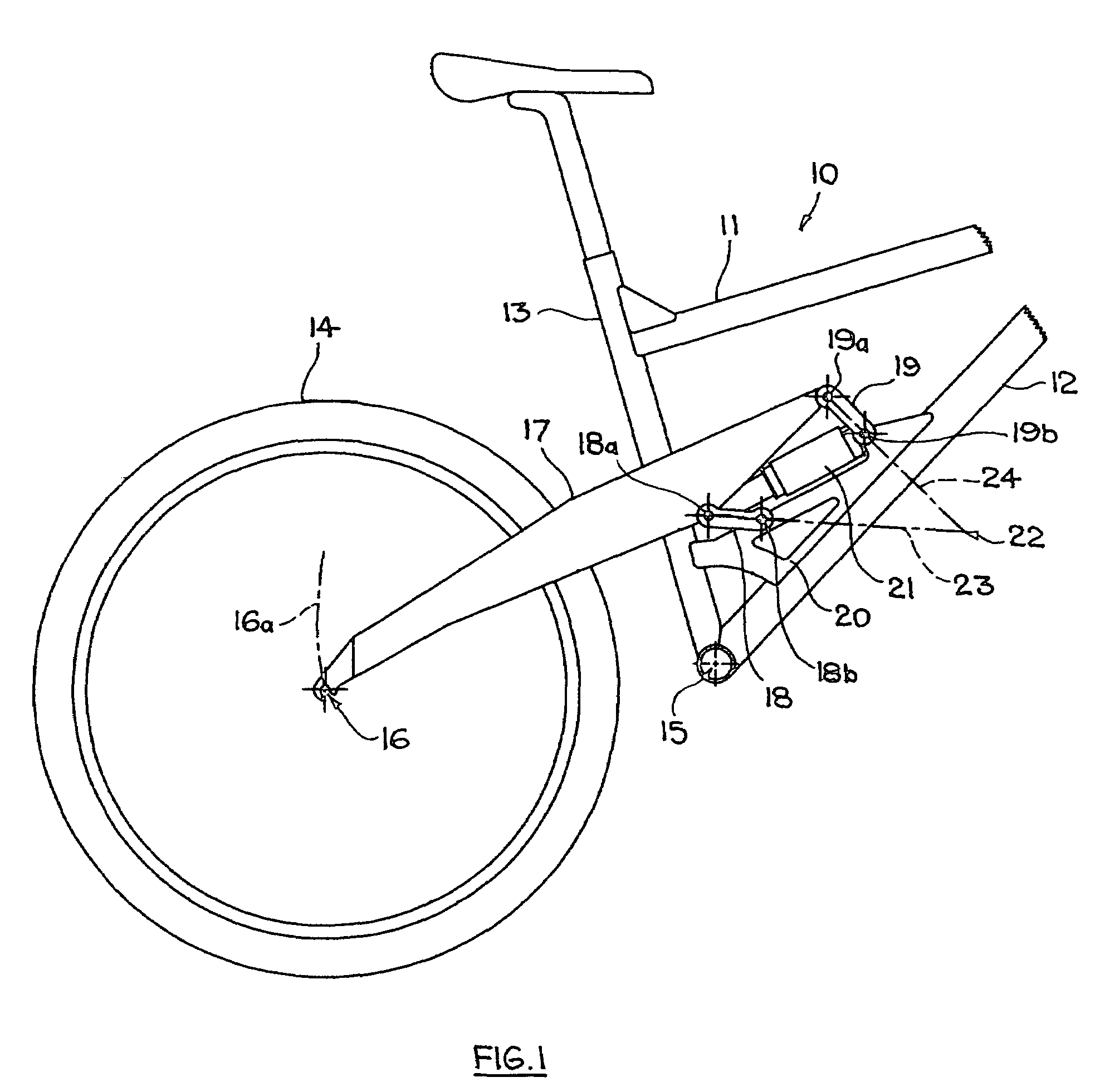Bicycle rear suspension
a rear suspension and bicycle technology, applied in the field of bicycles, can solve the problems of compromising lateral rigidity of the linkage, weight and cost penalties, complicated incorporation, etc., and achieves the effect of enhancing the lateral stiffness of the suspension, enhancing the overall stiffness of the linkage, and high commonality of pivot components
- Summary
- Abstract
- Description
- Claims
- Application Information
AI Technical Summary
Benefits of technology
Problems solved by technology
Method used
Image
Examples
Embodiment Construction
[0022]Referring now to the drawings there is shown part of a bicycle, for example a bicycle intended for off-road use (“mountain” bicycle), comprising a frame 10 with a crossbar 11, down tube 12 and seat tube 13. The crossbar 11 and down tube 12 may be united into a single component to the right of FIG. 1 and, whether so united or remaining separate, are connected to a steering assembly and front wheel forks or suspension (not shown) of the bicycle. At the junction of the down tube 12 and seat tube 13 there is provided a bearing location for a pedal crank drive fixedly connected with a drive sprocket of a chain-and-sprocket drive transmission (not shown) to a rear wheel 14 of the bicycle. A driven sprocket of the transmission is fixedly connected with an axle of the rear wheel and drive is transmitted from the drive sprocket to the driven sprocket by way of an endless chain. In the case of a drive transmission provided with gearing, several coaxial drive or driven sprockets of respe...
PUM
 Login to View More
Login to View More Abstract
Description
Claims
Application Information
 Login to View More
Login to View More - R&D
- Intellectual Property
- Life Sciences
- Materials
- Tech Scout
- Unparalleled Data Quality
- Higher Quality Content
- 60% Fewer Hallucinations
Browse by: Latest US Patents, China's latest patents, Technical Efficacy Thesaurus, Application Domain, Technology Topic, Popular Technical Reports.
© 2025 PatSnap. All rights reserved.Legal|Privacy policy|Modern Slavery Act Transparency Statement|Sitemap|About US| Contact US: help@patsnap.com



